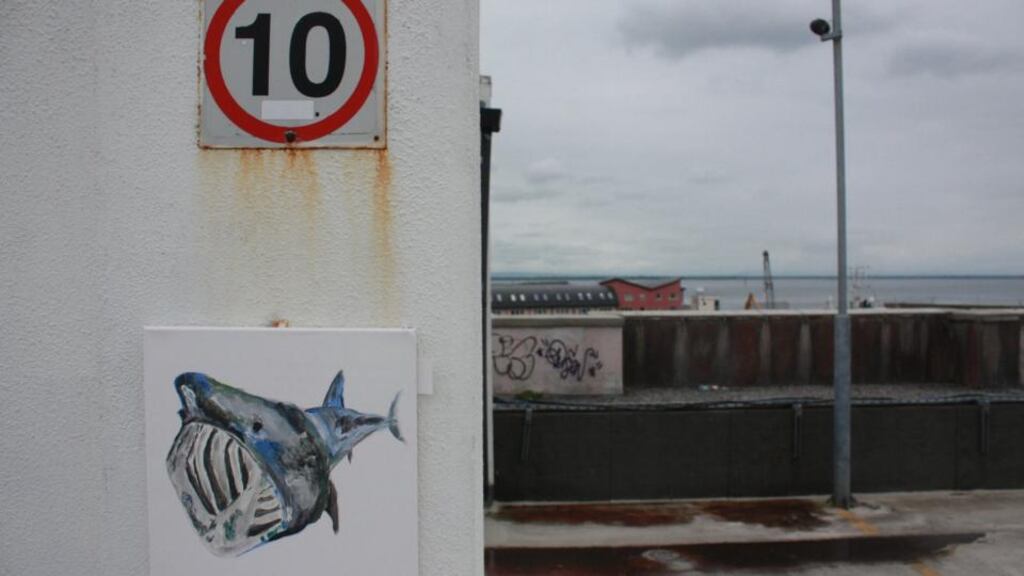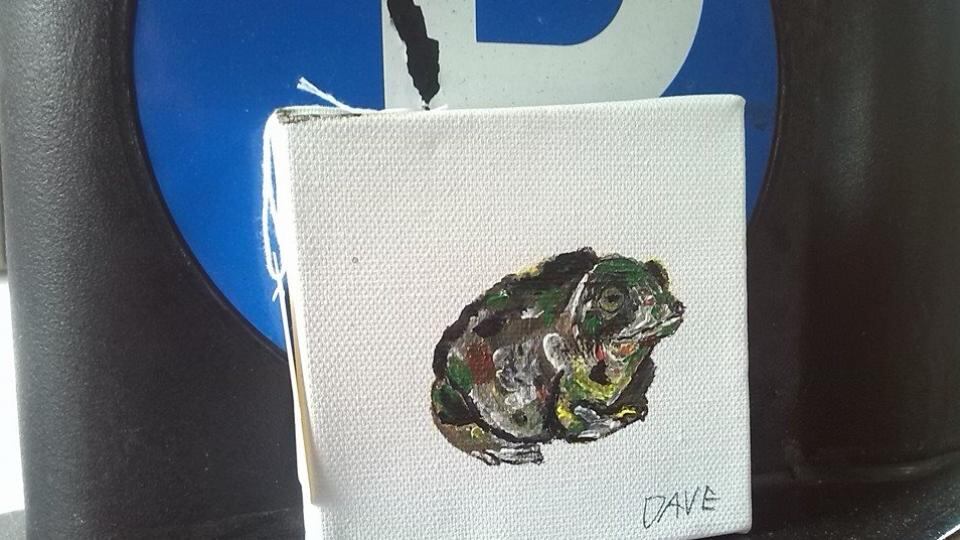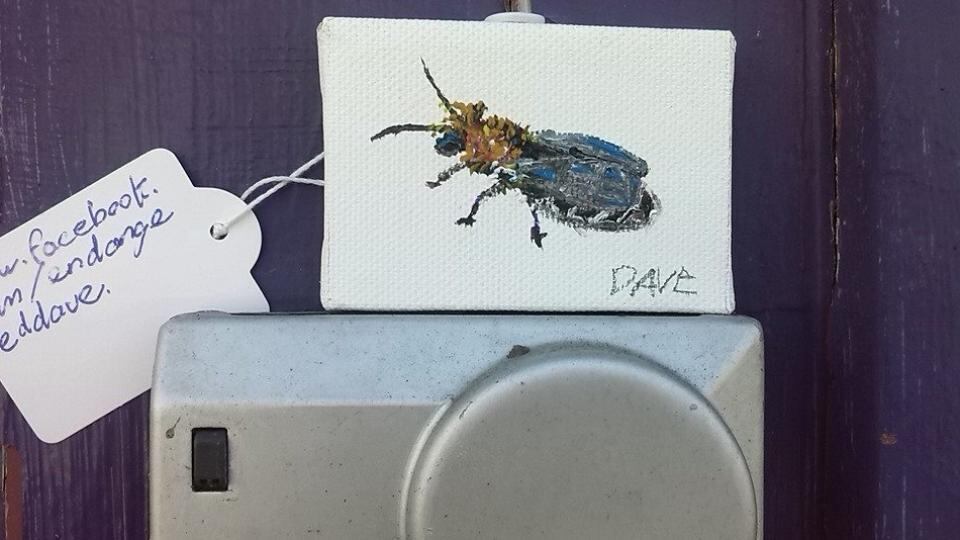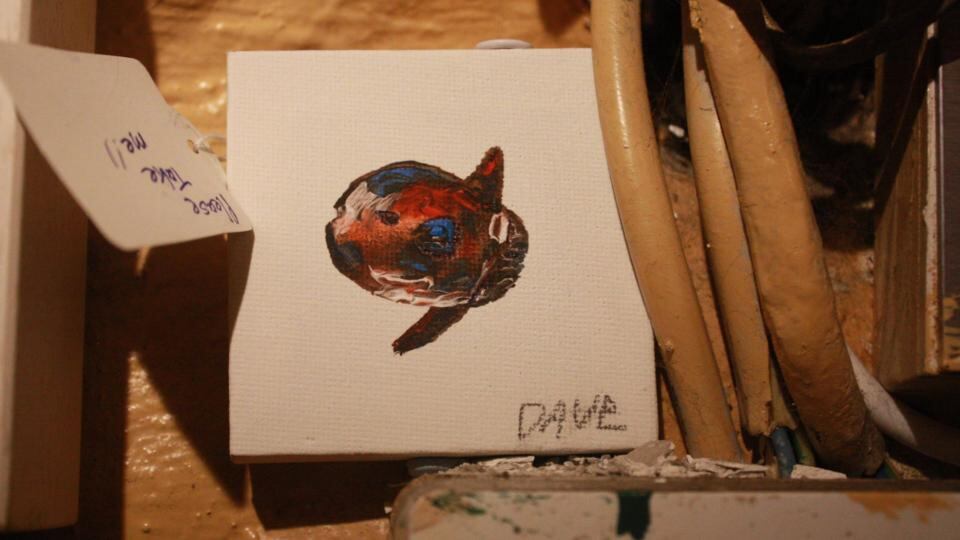Few creatures in Irish waters are stranger to human eyes than the sunfish. It seems to be all head and no body, can be almost square, and grows as long (and wide) as three metres. It also likes to lie on the surface of the ocean. One theory says it does this to warm up after deep dives. Another says it is inviting seabirds to eat its parasites. It used to be considered very rare in Ireland, and it is protected in EU waters. It is now seen off our coasts with increasing frequency, however, a possible indication of climate change.
Be that as it may, I never expected to find a sunfish in the toilet of Third Space, my local cafe in Smithfield, Dublin. But there it was, perched on the cistern, with a little label attached that reads “Please take me, and please read the back”.
If you don’t believe me, take a look at EndangeredDave’s Facebook page, where the Smithfield sunfish appears in its curious context, along with a menagerie of images of other threatened animals in unlikely situations. All of them are painted in acrylics, on board or canvas, and all of them are hung or standing in public places, mostly outdoors. All of them, too, are gifts to the finder, who is requested to post a photograph of the relocated painting to the page, where they will find more information about the animal.
0 of 3
This conservation-awareness campaign, conducted by David Byrne, a talented amateur artist, must be one of the most original of such schemes anywhere. He has been at it for only a few months, but it is already taking on an international dimension: he gets requests to send his paintings to other European cities so that people can hang them in “street galleries” that promote similar messages.
Byrne trained in art and design at Galway-Mayo IT and then in community arts at the National College of Art and Design, but he says his real vocation is social activism and advocacy, in which he holds a master’s degree. He works with the homeless at Focus Ireland in Dublin and at a shelter in Galway.
He began painting animals when he took a break between studies to teach English in Korea. And he works fast: he had produced the sunfish, a humpback whale, an otter and a leatherback turtle the night before we met at Third Space.
When he came back from Korea Byrne was shocked by the boom’s impact on his native town, Ashbourne, in Co Meath. Nine hundred people lived there when he was born. Thirty-three years later it has soared to 10,000, as a new Dublin dormitory.
Exploring a ruined barn on the edge of town one day, he got the idea of painting an endangered animal on its walls. He hoped it would make local people think about what was happening to their environment. He had never taken a great interest in wildlife before, but he felt that something important was disappearing fast.
Byrne soon found that painting on buildings was a limited option, and he didn’t want to get anyone’s back up by violating property rights.
But the streets, as he had observed at recent movements such as Free Art Fridays in Dublin, could become public galleries – as long as you were prepared to offer your work, free, to the first person who liked it.
Discovering ultracheap canvas, boards and paint in discount stores was a breakthrough, as it meant he could afford to produce giveaway art. A friend from college, Áine Keating, encouraged him to escalate the impact of each work he put on show, and share conservation information, on Facebook and Twitter.
Byrne had a remarkable stroke of luck with an early painting, Irish Bumble Bee, which he displayed in Stoneybatter last July. The next day he got a message from the Facebook page of the Irish Museum of Modern Art. The canvas had fallen into a drain, but an Imma staff member had rescued it, hung it on the office wall – and posted a photograph of it.
The following day Imma reported that it was one of its page’s most popular postings ever. Not many people move from the gutter to a national art institution that fast.
The day we talk he is looking for temporary homes for his latest work. We finally find a hook for his whale on a bleak stretch of Barrack Street. The rich grey paint of an old door near Collins Barracks sets off the tones of his otter as well as any gallery wall.
The next day one James Flynn posts EndangeredDave and tells him that he has recently seen a young otter near where he had found another of Byrne’s paintings, in Ashtown. Byrne, who had seen an otter in the wild for the first time the previous week, is delighted by the coincidence.
Another of his otters has recently turned up in Berlin. But his latest work, a guinea pig, seems to have gone halfway around the the world, ending up “somewhere in Brazil”. twitter.com/endangereddave facebook.com/endangereddave


















